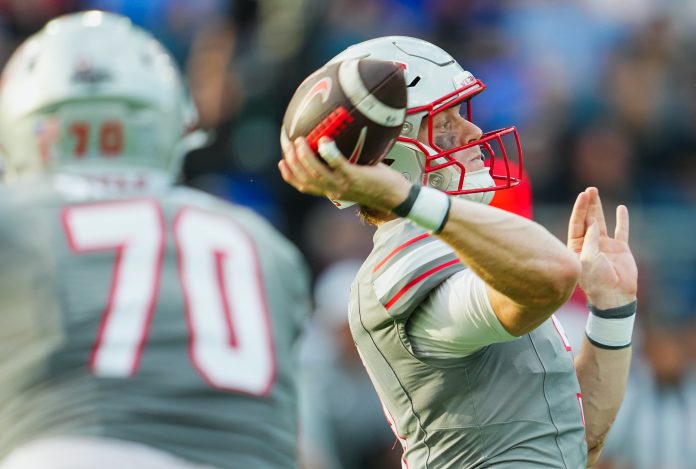The invention of the college football transfer portal has allowed players to move more freely between schools. But many casual viewers wonder how it actually works. Who can enter the portal, and when are they eligible to play? Here are the transfer portal rules in 2024.
When Can Players Use the Transfer Portal?
While there are much fewer restrictions on athlete movement than in the past, most of the restrictions still in place revolve around the timing of transfers.
There are currently two transfer portal windows each season, though how long that remains the case is yet to be seen. The first is immediately following the conclusion of the regular season for 20 days, while the second is after spring practice and was shortened by the NCAA to 10 days in October 24.
Last season, the first window was from Dec. 4, 2023, to Jan. 2, 2024. The spring window was from April 15-30.
This year, the dates are scheduled for December 9-28, 2024, and April 16-25, 2025. Despite some conversation around adding an additional October portal window or even discussions over doing away with the spring window altogether, college football retains two portal windows.
MORE: Simulate the College Football Season with CFN’s College Football Playoff Predictor
Those windows are open for a player to put his name into the portal, but he doesn’t have to commit to his next school before the window closes. In fact, because of processing time, some players won’t even show up in the transfer portal database until after the window has closed.
There are a few exceptions where players can enter the portal outside of these scheduled dates. The main exception is a 30-day window after a head coaching change.
This year, that was a major exception, as Nick Saban’s retirement occurred after the first portal window. That opened up the portal for Alabama players, but also for players from Washington, South Alabama, Buffalo, Arizona, and San Jose State in the subsequent chain reaction of coaching changes.
Recently, the NCAA changed its policy to require graduate transfer students to adhere to the portal windows. Previously, graduate transfer students had been granted more autonomy when it came to transferring schools.
Who Can Transfer?
Any student-athlete in good academic standing can enter his name in the transfer portal. However, once he enters, his previous school has no obligation to hold his spot on the team or welcome him back should he decide to remove his name from the portal.
There is also no guarantee an athlete will find a new school. According to a 2022 Sports Illustrated report, nearly 50% of players who enter the portal fail to find a new school.
FREE: Sign up for the College Football Network Newsletter to receive unique stories from the world of college football directly to your inbox!
If a player can’t find a new school, he is welcome to re-enroll as a student at his previous school or a new one, but he likely won’t play for a team. In rare cases, players have walked on at other programs after entering the portal, but this is not a normal occurrence.
Coaches from other schools are not allowed to talk to potential transfers until after players enter the portal, though that doesn’t mean players are never contacted prematurely.
When a player enters the portal, he can make himself open for business or attach a “do not contact” tag, making it so a team cannot initiate contact. This typically occurs when the player has a strong idea of what school he wants to attend. Kayden Proctor, for example, used a “do not contact” tag when he transferred from Iowa back to Alabama this spring.
Are There Any Restrictions on Transfers?
While many restrictions existed in the past, like a redshirt season prior to 2021 and a one-time transfer exemption between 2021 and April 2024, there are fewer restrictions now. In the past, it was more difficult to transfer within a conference as many conferences, including the SEC, had rules preventing immediate eligibility for intraconference transfers.
However, such restrictions have been struck down. The main restriction is that a player must be in good academic at his current institution to be eligible for transfer. This includes maintaining a minimum GPA of 2.0 and reaching certain credit thresholds.
While there are few restrictions on players entering the portal, individual schools can place restrictions on who can be admitted to their institution. These could include stricter academic standards (like in the case of private high-academic institutions like Vanderbilt and Stanford) or certain Title IX restrictions preventing players with past legal issues from being enrolled.
A few schools, usually just military academies, do not allow any transfers into their programs.
College Football Network has you covered with the latest from the ACC, Big Ten, Big 12, SEC, and every Group of Five conference and FBS Independent program.

